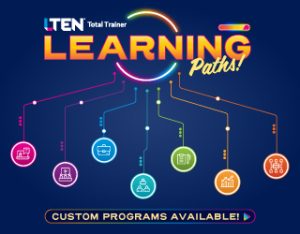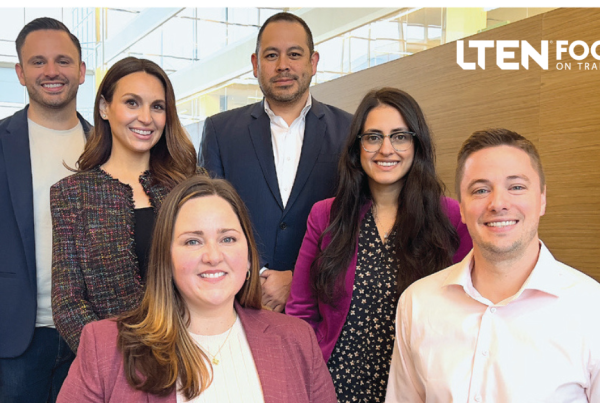
TRANSFORMING TEAMS – By Kim M. Catania
A leader’s success often lies with their team
 The life sciences/biopharma industry is one of the most dynamic, ever-changing and demanding environments in which to work. Leaders in this realm face multifaceted challenges, ranging from individual success and fostering innovation to navigating how to lead their teams to achieve goals. In this complex landscape, coaching is a powerful tool for propelling individuals, teams and the organization to victory.
The life sciences/biopharma industry is one of the most dynamic, ever-changing and demanding environments in which to work. Leaders in this realm face multifaceted challenges, ranging from individual success and fostering innovation to navigating how to lead their teams to achieve goals. In this complex landscape, coaching is a powerful tool for propelling individuals, teams and the organization to victory.
A leader’s success hinges not only on their own prowess and capabilities, but lies upon the effectiveness of their team. Equipping direct reports with requisite skills and confidence needed to thrive is paramount.
Enter coaching, a transformative tool designed to unlock latent potential and propel people and organizations to new heights.
Benefits Beyond Individual Growth
Coaching direct reports offers a multitude of advantages that extend far beyond individual development.
- Enhancing performance: Coaching enables team members to enhance skills and behaviors to excel in their roles. Through clear, targeted guidance, leaders empower team members to overcome challenges to make better decisions, and to consistently deliver high-quality work.
- Forging a cohesive team: Coaching fosters a collaborative and supportive environment. By providing a psychologically safe, empathetic arena, leaders cultivate open communication and encourage team members to more openly share challenges and insights, which builds stronger relationships. This enables the team to be more effective, leading to a more cohesive and productive unit.
- Sparking engagement: Coaching demonstrates your investment in your team’s growth. When team members feel valued and supported in their development, they become more engaged and motivated to contribute their best efforts.
- Cultivating future leaders: Effective coaching and development identifies and nurtures future leaders within the team. By honing their leadership skills and providing opportunities for team members to take ownership, it prepares them for future growth, ensuring a continuous pipeline of talent within the organization.
Building a Coaching Culture
Create a coaching culture within the team to reap long-term benefits. This fosters a supportive environment for growth, learning and development.
Remember, coaching is about your team members’ needs and goals, not yours. Actively listen to their aspirations and challenges to tailor your coaching approach to their specific needs.
Be sure to set SMARTER goals (specific, measurable, achievable, relevant, time-bound, evaluate, and revise) for the coachee’s development. Clarity ensures everyone is on the same page and working toward achieving defined objectives.
Open communication and trust is worth repeating to drive home its importance. Establish a safe space where open communication and honest feedback are encouraged. Building trust allows your team to feel comfortable exploring challenges and seek guidance, direction and support from their leader.
Cultivate a growth mindset by emphasizing that capabilities can be developed with modeling and practice. Celebrate progress, not just perfection, and encourage your team members to view setbacks as stepping stones and opportunities to gain experience and grow.
Strategies for Coaching Success
As a leader, it is key to maximize the effectiveness of coaching sessions. So, leverage coaching models.
Think of coaching models as GPS systems, like Google Maps or Waze for the coaching journey. Models provide leaders direction, a plan and a map, which streamlines coaching conversations.
During a recent live first-line leader program, participants initially hesitated to implement the organization’s coaching model. However, upon witnessing the benefits firsthand, they realized it alleviated the burden of planning and executing coaching sessions, as the model itself guided them through the process.
If the organization has a coaching model, implement it. If they do not, investigate any of the following models and use them as a guide:
- GROW: Stands for goal, reality, options and will. This model focuses on helping coachees define their goals, understand their current situation, explore various options and build the commitment to act.
- CLEAR: Stands for contracting, learning, excel, awareness and react (or review). This model emphasizes establishing clear expectations at the outset, facilitating learning and development, fostering excellence, promoting self-awareness and reflecting on progress.
- DOVE: Stands for desired outcome, objectives, values and evidences. This model focuses on defining the desired outcome, setting clear objectives, aligning with core values and identifying evidence of progress.
- OSKAR: Stands for outcomes, scales, key factors, actions and results. This model emphasizes setting clear outcomes, establishing measurement criteria, identifying key factors influencing success, developing action plans and tracking results.
- ABC: Stands for agenda, body and closure. This is a simple yet effective model for structuring coaching sessions, ensuring you cover all essential elements and end on a clear note.
These are just a few examples, and there are many other coaching models available. The best model for you will depend on your specific coaching goals and the needs of your coachee.
The most impactful leaders do not dictate solutions; they guide discovery. Incorporate open ended questions to stimulate self-reflection and problem-solving during coaching sessions.
Active listening, demonstrated by eye contact, paraphrasing and nonverbal gestures like nodding, indicates a leader’s genuine interest and allows the coachee to feel heard and understood.
If a leader cannot emulate the behavior or skill, how can they expect their team member to? Demonstrate an example of what you, as a leader, would like the coachee to do, then provide them with space to experiment, personalize and own it. Encourage experimentation and practice in a safe environment to solidify learning and build confidence.
Move beyond theory and align on goals. The coachee may not always agree with what behavior needs development or change; however, they do need to understand that it is not a suggestion, but a needed way of working for success in role. Ensure concrete action plans are created to implement the learned skills or behavior modification — with a timeline and check-ins to course-correct as needed.
Acknowledge and celebrate small wins and progress. Positive reinforcement motivates coachees to continue putting in effort and reinforces the value of coaching.
Invest in the Team’s Future
Coaching team members is not about the immediate benefits; it is a journey and investment in the long-term success of the team and organization. By creating a coaching culture and employing effective coaching techniques, leaders can empower team members to reach their full potential, leading to a more productive, engaged and successful team.
Remember, coaching is a collaborative journey. As leaders guide team members on their development path, leaders themselves grow and learn to be more impactful.
 Kim M. Catania is principal, Catania Communications. Email her at kim@cataniacommunications.com or connect through linkedin.com/in/kim-m-catania-1312196.
Kim M. Catania is principal, Catania Communications. Email her at kim@cataniacommunications.com or connect through linkedin.com/in/kim-m-catania-1312196.








